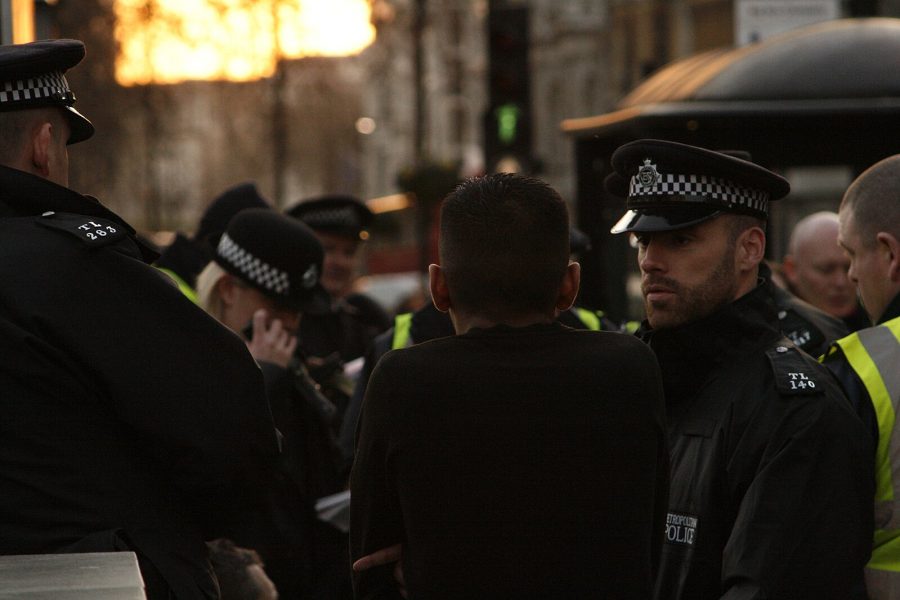300-page report highlights that racism, homophobia, and sexism is rife within the Metropolitan Police Force

Maddy Hellard discusses the damning Casey Report highlighting the widespread racism, homophobia, and sexism within Greater London’s police force.
Founded in 1829, the Metropolitan (Met) Police are the largest force in the UK. However, over recent years, public trust and confidence in the force has depleted. With a recent independent report by Baroness Louise Casey finding that the force is ‘institutionally racist, sexist and homophobic’, concerns consistently raised over the years have once again been confirmed.
This scathing 300-page report was published just over a year since it was first commissioned following the murder of Sarah Everard. Sarah’s murder was unsurprisingly not the only reason for the review, as the Met have been under scrutiny for years regarding its corruption. The Met recognises this, stating on their website that it was also commissioned due to ‘other deeply troubling incidents’.
The Met have been under scrutiny for years regarding its corruption
The Casey report aimed to uncover ‘whether the Met’s leadership, recruitment, vetting, training, culture and communications support the standards the public should expect.” It also provided recommendations on how to restore and maintain public trust in the force, stating that the biggest single barrier to its improvement is a ‘culture of defensiveness and denial’.
It was found that the homophobia within the Met is ‘deep-seated’, with almost one in five LGBTQ+ employees having personally experienced homophobia. 35% of respondents who reported experiencing bullying, said it occurred at least once or twice a week. It was concluded that data on the sexuality of officers needs to be collected in order to actively monitor these protected characteristics.
It was found that the homophobia within the Met is ‘deep-seated’, with almost one in five LGBTQ+ employees having personally experienced homophobia
Sexism is also clearly rife within the force, as a survey within the report found that 33% of female respondents have personally experienced sexism at work, with a further 12% having reported experiencing sexual harassment or assault. Women are also still underrepresented in the Met, with the worst disparity being amongst the higher ranks. Casey describes it as a ‘vicious cycle’ created by the ‘boys club culture’ that prevents women from climbing the ranks.
A survey within the report found that 33% of female respondents have personally experienced sexism at work, with a further 12% having reported experiencing sexual harassment or assault
When dealing with crime, it is plainly written that the Met is failing women and children, with violence against women and girls being seen and treated differently from ‘serious violence’. Recommendations for tackling the misogyny includes establishing new Specialist ‘Soteria’ teams to deal with rape and sexual offences.
It is hard to believe that the publishing of this report will have its desired effect, as these are not new findings. In fact, the force has openly admitted to ‘justified’ corruption in the past. As head of the Met during the 90s, Paul Condon preached ‘noble cause corruption’, the idea that police can justifiably bend rules based on their own intuition and assumption of guilt, rather than actual evidence.
Paul Condon preached ‘noble cause corruption’, the idea that police can justifiably bend rules based on their own intuition and assumption of guilt, rather than actual evidence
Moreover, institutional racism within the Met was addressed almost 25 years ago following the racially motivated murder of Stephen Lawrence in an unprovoked knife attack in 1993. The Macpherson Report, which has since been called ‘one of the most important moments in the modern history of criminal justice in Britain’, was published in 1999. It concluded that the investigation of the killing had been ‘“marred by a combination of professional incompetence, institutional racism and a failure of leadership’. Furthermore, 5 years later, the 288-page Morris report found that BAME officers faced serious discrimination in the workplace, with diversity ‘at worst, a source of fear and anxiety, and at best a process of ticking boxes’. Unfortunately, from the Casey report, it is painstakingly clear that any previous attempts to tackle this racism have dramatically failed.
To conclude, the Met faces the immense challenge of resolving its corruption and discrimination. A quick google search of the Metropolitan Police provides hundreds of horrifying news stories involving corrupt Met officers, before even reaching the official Met website. Are victims even going to bother reporting a crime when, in the process, they are bombarded with horror stories about those who vow to protect? As these issues have been well known for many years, it raises the question, is this report going to be the one to invoke the change?


